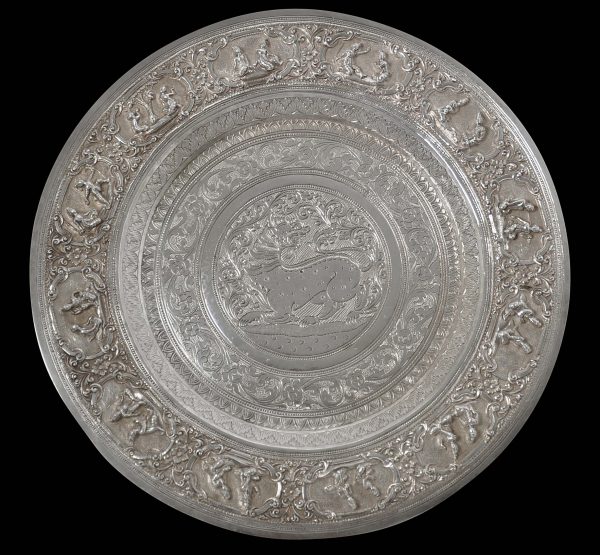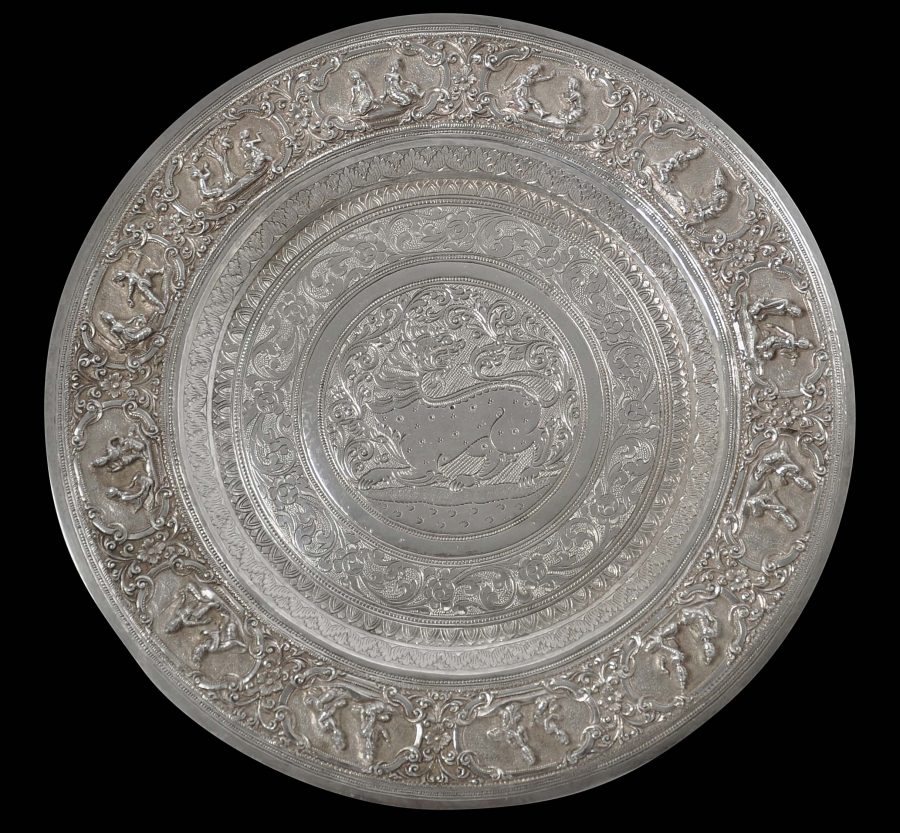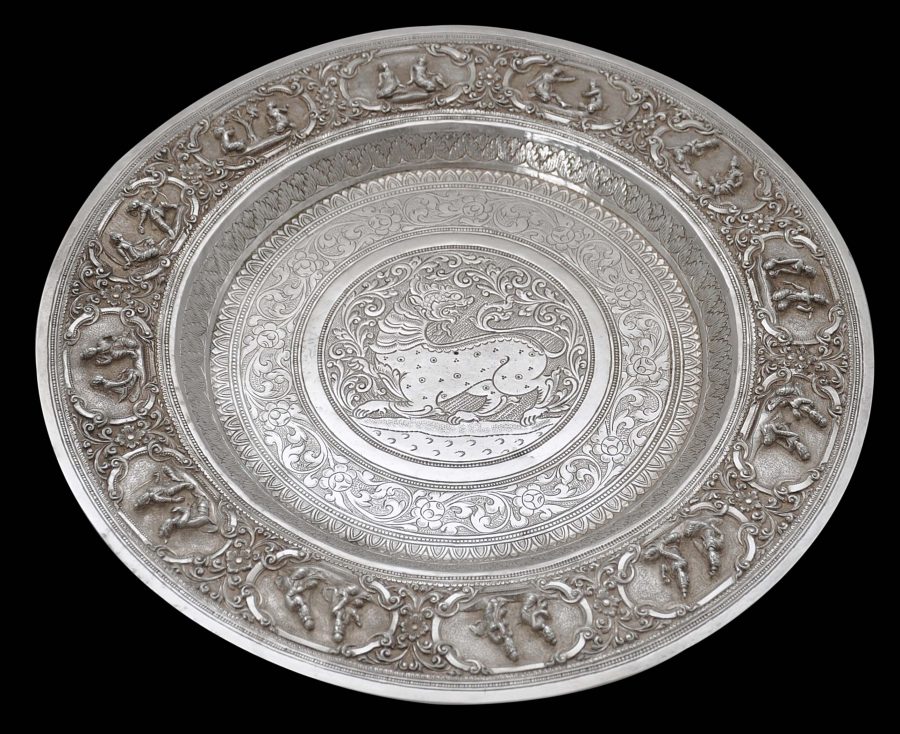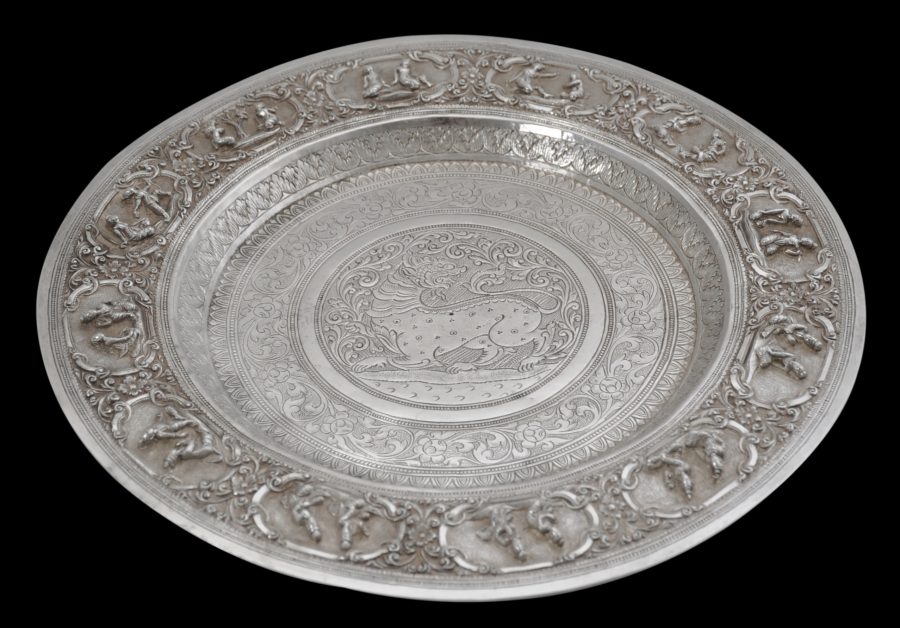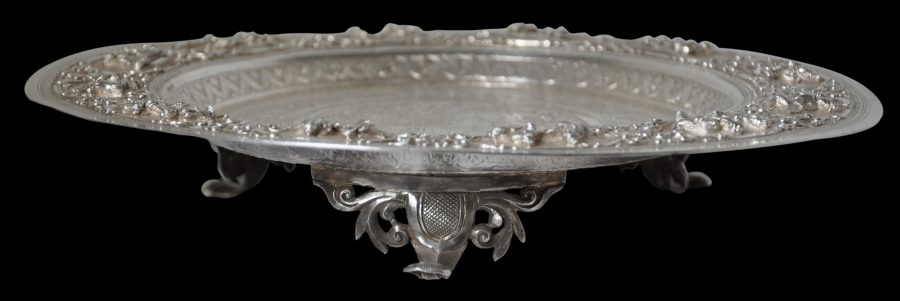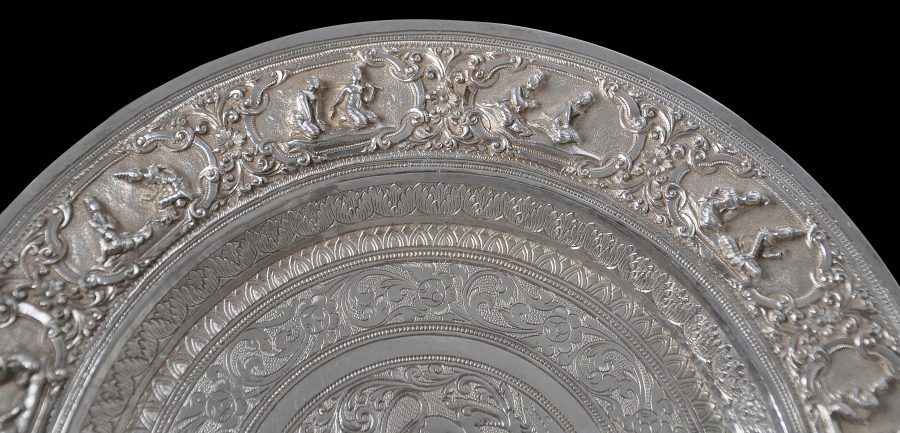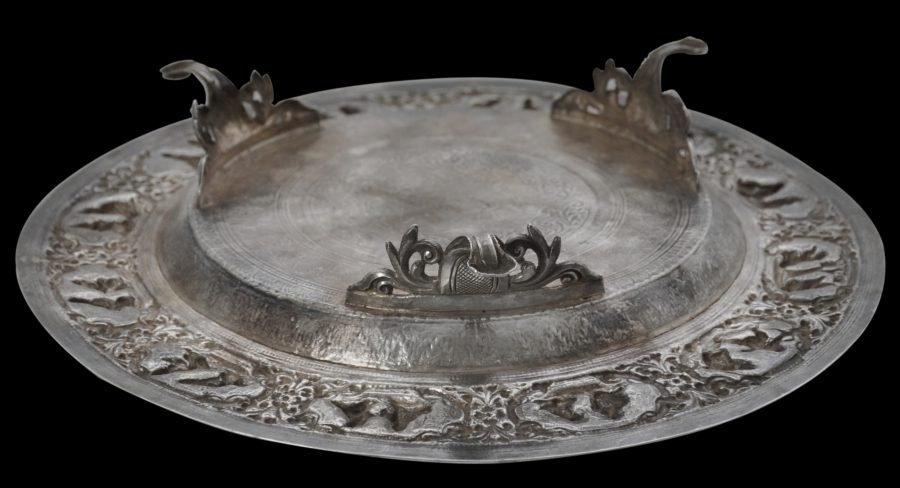Enquiry about object: 4776
Repoussed Silver Dish
Burma early 20th century
diameter: 25.5cm, height: 4.2cm, weight: 472g
Provenance
from the estate of Arthur Morris, and thence by descent. Morris (1880-1944) trained as an engineer and spent nineteen years working in Burma for the colonial administration in the Public Works Department. During this time, he developed a strong interest in Burmese arts and crafts, particularly in Burmese lacquer. He was appointed Provincial Art Officer in 1914 for which he organised an annual arts and crafts exhibition of 'native' craftsmen in Rangoon. He was also a member of the Board of Studies in Fine Arts at Rangoon University, and was chairman of the sub-committee which was formed in Rangoon to collect material for the Arts and Crafts Section of the Burma Pavilion at the British Empire Exhibition that was held in Wembley, London, in 1924.
This pleasing dish, from the estate of an early British administrator in Burma, sits on three splayed feet and is of solid, high-grade engraved and repoussed silver.
The centre roundel is engraved with a Burmese tiger (a symbol for the East and also the sign for Monday). The wide rim is repoussed in high relief with twelve oval cartouches each filled with a pair of figures in Burmese dress and which undoubtedly tell a story from Burmese Buddhist lore. The cartouches are beautifully defined by interlocking foliage and flower motifs.
The dish is in excellent condition – there are no losses or repairs and the definition of the relief work remains sharp and not worn down by excessive polishing.
References
Fraser-Lu, S., Silverware of South-East Asia, Oxford University Press, 1989.
Fraser-Lu, S., Burmese Crafts: Past and Present, Oxford University Press, 1994.
Tilly, H.L., The Silverwork of Burma (with Photographs by P. Klier), The Superintendent, Government Printing, 1902.
Tilly, H.L., Modern Burmese Silverwork (with Photographs by P. Klier), The Superintendent, Government Printing, 1904.


